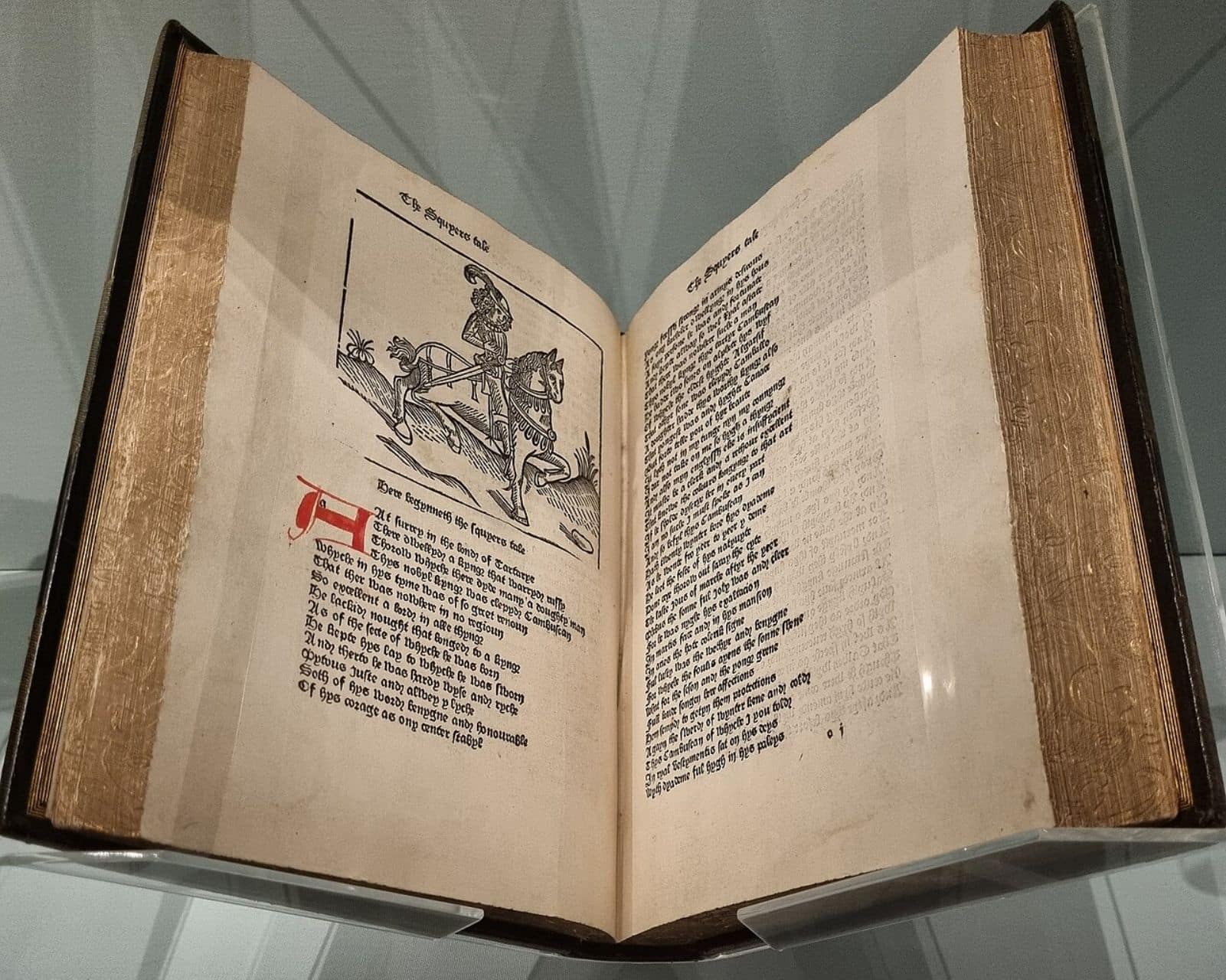Scholars Solve Mystery of Medieval Manuscript That Baffled Experts for 130 Years
Source: GreekReporter.com

A team of scholars has solved a literary riddle that has baffled experts for nearly 130 years, uncovering the true meaning behind a puzzling reference in Geoffrey Chaucer’s The Canterbury Tales. The breakthrough comes from a fresh examination of a fragment of an ancient medieval manuscript, once dismissed as too cryptic to decode.
The mystery centered on Chaucer’s mention of The Song of Wade, a once-famous chivalric romance, in “The Merchant’s Tale.” Scholars were long puzzled by why the poet, known for exploring themes of love and virtue, would allude to a tale that, in its known form, seemed filled with mythical creatures.
The confusion dates back to 1896, when scholar M.R. James uncovered unexpected English passages while reviewing Latin sermons at the University of Cambridge. Known as the Humiliamini sermon, the text appeared to quote a version of The Song of Wade that described giants, elves, and water sprites.
In one passage, Wade’s father, Hildebrand, was even portrayed as a giant. The manuscript left readers questioning whether Chaucer’s reference aligned with a legendary romance or a work of fantasy.
A scribal error reveals wolves, not elves
After years of debate, researchers James Wade and Seb Falk revisited the sermon and identified a simple but critical error.
The confusion, they say, stemmed from three small spelling mistakes by the original scribe, particularly the miswriting of the letters “y” and “w.” Once corrected, the text’s meaning shifted dramatically. The reference to “elves” became “wolves,” placing the tale firmly back in the realm of human drama:
“Some are wolves and some are adders; some are sea-snakes that dwell by the water. There is no man at all but Hildebrand.”
After 130 years, Cambridge scholars have solved the most Chaucerian mystery – the frequently referenced Song of Wade was actually not a monster-filled epic but a chivalric romance.
Drs James Wade and Seb Falk @GirtonCollege explain why and how this changes everything:… pic.twitter.com/LPsLcPVy5W
— Cambridge University (@Cambridge_Uni) July 16, 2025
By removing the supernatural elements and portraying Hildebrand as an ordinary man, the story aligns more closely with the grounded chivalric romances of the 12th century—tales filled with rivalry, loyalty, and courtly love.
“Changing elves to wolves makes a massive difference,” said Falk. “It shifts this legend away from monsters and giants into the human battles of chivalric rivals.”
Sermon blends religious teaching with medieval pop culture
The sermon’s author, according to Wade and Falk, was likely Alexander Neckam, a respected medieval scholar and cleric. The researchers argue that Neckam’s humility-centered sermon utilized “The Song of Wade” as a cultural reference to keep his audience engaged, a lot like how modern speakers reference popular media.
“Here we have a late-12th-century sermon deploying a meme from the hit romantic story of the day,” said Wade. “This is very early evidence of a preacher weaving pop culture into a sermon to keep his audience hooked.”
The sermon uses vivid animal imagery to illustrate human flaws. Wolves represent power-hungry figures, adders stand in for deceit, and sea-snakes symbolize lurking threats. By anchoring the message in familiar tales, Neckam made abstract biblical warnings easier to grasp.
The study, published July 15 in The Review of English Studies, not only corrects a long-standing misreading but also sheds light on how religious teachings borrowed from cultural touchstones. The once-misunderstood ancient medieval manuscript now serves as a window into both literary history and the storytelling tactics of the Middle Ages.
The original article: belongs to GreekReporter.com .
